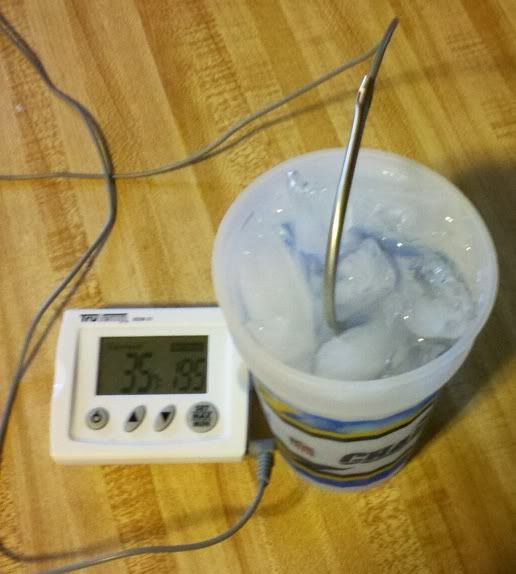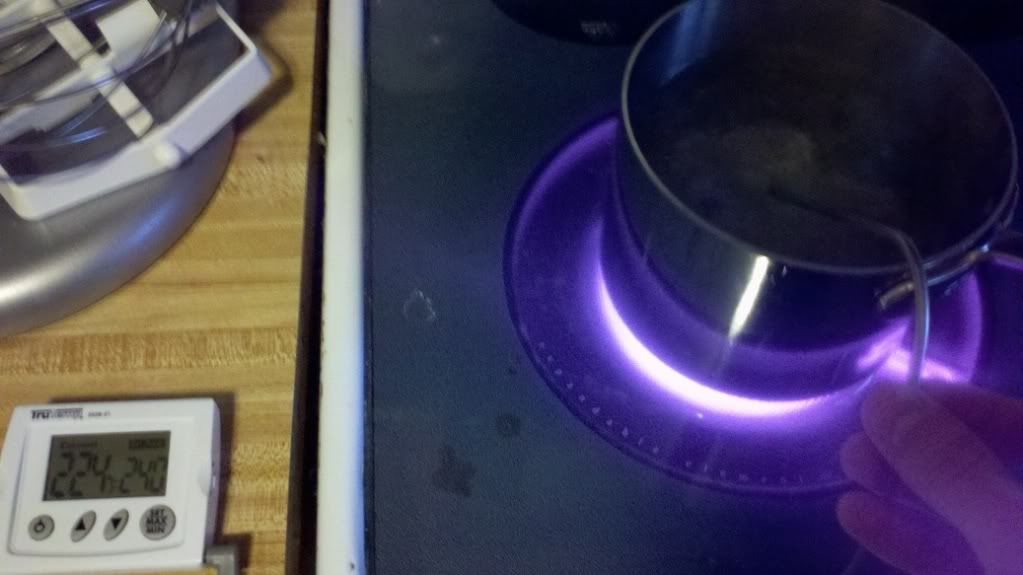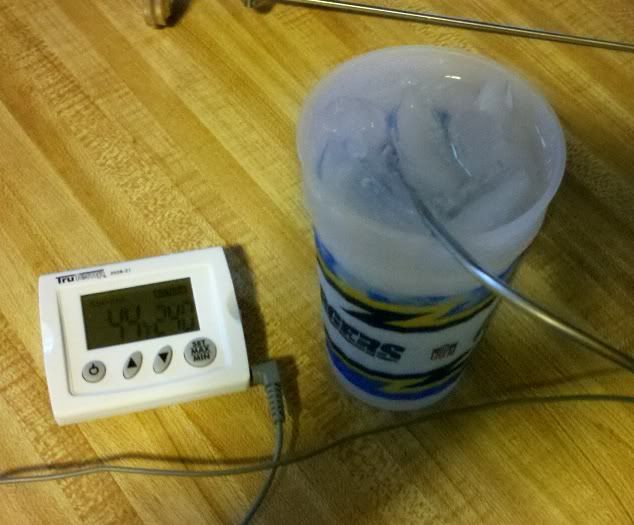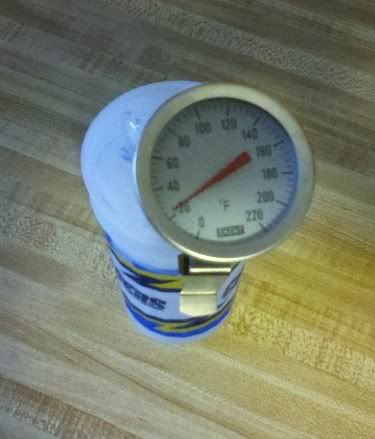From a blog here on HBT:
Easy Thermometer Calibration and Correction
Posted 03-25-2009 at 09:54 PM by ArcaneXor
For my first blog entry, and to commemorate my 1000th post on Homebrewtalk.com, I'm posting these easy instructions on thermometer calibration and correction.
Background:
I am using two thermometers at this point: A floating glass thermometer and a cheap digital probe thermometer from IKEA. I noticed that they read identical temperatures at room temperature, but showed a differential of no less than 14 degrees F at boiling! Needless to say, I was immediately worried about my mash temperatures. I am a partial mash brewer, but grain makes up anything from 50% to 80% of my fermentables, so hitting my infusion temperature is definitely important!
Calibration:
This step is fairly easy. You will need your thermometer(s), some ice and some water. First, you'll want to crush up a bunch of ice, and mix it with a little bit of tap water to create a sort of slushy-type liquid. Pour into a tall glass (like a Pilsner glass), and place your thermometer(s) into that. After waiting about three minutes for the probe to equilibrate, take a reading. Physics dictates that the slushy should be 32 degrees F (0 deg C), so if your readings diverge from that value, record them.
Next, boil some water on the stove and place your thermometer in the boiling liquid, being careful that the probe does not touch the walls or bottom of your boil kettle. Assuming you are located near sea level, physics dictates that water boils at (or very close to) 212 degrees F (100 deg C). If your readings diverge from that value, record them. If you live significantly above sea level, you may want to use Google to locate a calculator or table to identify at what temperature water should boil at your location, and use that value as your reference instead of 212 degrees.
Correction:
Some thermometers have a built-in correction mechanism - refer to your user manual to figure out how to use it. For dial thermometers, it may be as easy as turning a screw. Most thermometers, however, lack a correction function, so you'll have to figure this out by yourself. Excel, or any other spreadsheet software (many of which are available for free online) works very well for this purpose. Basically, we'll be doing a simple linear interpolation through which the range between the observed difference between freezing and boiling temperatures is manipulated so that it equals the known, actual range.
So, open your spreadsheet and label a cell in which you will enter whatever temperature you a trying to achieve (e.g. your target mash temperature). Enter a value in that cell (e.g. 152).
Then, in another cell, enter the following equation:
=observed temp in slushy+((cell with target temperature-32)*(observed temp at boiling-observed temp in slushy))/(212-32)
For instance, assuming the cell you created where you'll enter your target temperature is A8, your observed temp in the slushy is 33 deg F and your observed temp at boiling is 218 deg F, the formula would look like this:
= =33+((A8-32)*(218-33))/(212-32)
You can enter any temperature value you are interested in - once you press enter, the formula will display what your thermometer should be reading at your desired temp. Using the example above, your thermometer will actually read 156.3 degrees when you are at your desired mash temperature of 152 degrees!
It is also helpful to reverse the above calculation so that you can obtain the true temperature given a thermometer reading at any time. All this takes is switching some terms around:
=32+((cell with target temperature-observed temp in slushy)*(212-32))/(observed temp at boiling-observed temp in slushy)
I hope these instructions are helpful, and will assist in you in hitting those mash and sparge temps spot-on without having to buy an expensive, new thermometer.
Cheers, and HAPPY BREWING!
P.S.: In case you ever accidentally submerge a digital probe thermometer under water, you may notice that it will read wildly skewed temperature values afterwards. In most models, that can easily be fixed by placing the probe in a hot oven for a few minutes. This will evaporate the liquid in the probe and essentially reset the thermometer in most models. Also, do a search for "Wort Proofing" on homebrewtalk.com for instructions on how to avoid this happening in the future.












